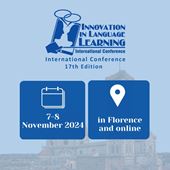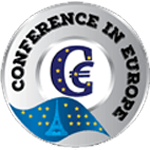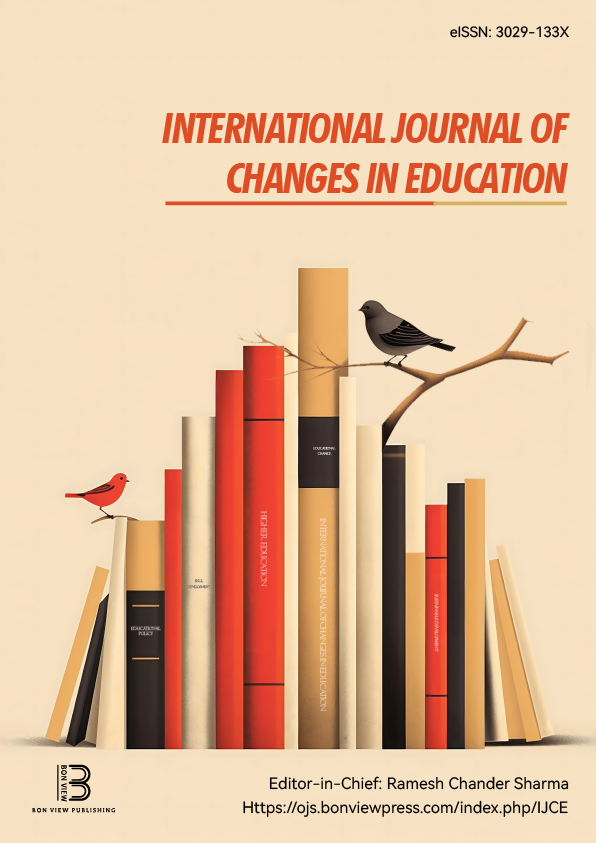Research Based on Design: Elaboration of Experimental Didactic Sequence
Karla Amâncio Pinto Field´s, Instituto Federal de Goiás - Itumbiara (Brazil)
Odete Aparecida Sousa Lopes, Instituto Federal de Goiás - Itumbiara (Brazil)
Juliana Gonçalves Santos, Instituto Federal de Goiás - Itumbiara (Brazil)
Leia Ramos Costa, Colégio Estadual Pastor José Antero Ribeiro (Brazil)
Abstract
This research is guided by Design-based research, which combines aspects of educational research with practice in real environment. The goal was to create an experimental didactic sequence using low cost materials of easy access. The team was formed by a researcher in the field of chemistry teaching, a teacher of basic education and two students of licentiate in chemistry. The first step consisted in choosing the theme and design principles. The chosen topic was solutions and the design principles were problematizing experimental activities. The second step was the design, creation of the didactic sequence composed of three classes. During the design, it was considered the physical structure and financial conditions of the school. The materials used in the practical activities were low cost and easy to access and the activities were developed in the classroom because the school does not have a laboratory. The third step was the implementation of the didactic sequence for high school students of a public school in the State of Goiás, Brazil. In the first class, we exposed some products of daily use containing different types of mixtures and students should identify if the products were formed by homogeneous or heterogeneous mixture and argue their positioning. After the arguments, the teachers helped the students to identify the phases of a mixture, the differences between homogeneous and heterogeneous mixture using the materials that were exposed. In the second class, the students produced several acerola juices with different concentrations. During this experiment, the contents of solute, solvent, concentration and dilution were discussed. In the third class, an industrialized powdered acerola juice was made and students analyzed the juice label to identify which chemical additives are present and their functions. The results of this intervention corroborate with the researches in the area of science education that point out that the pedagogical potential and the capacity to arouse interest and curiosity in an experimental activity are in the capacity of the mediator to problematize the phenomena, to instigate the students, to explore the data, make relationships and contextualize the presented contents.
Keywords: design, solutions, practical activities;
References
[1] Brown, A. “Design experiments: theoretical and methodological challenges in creating complex interventions in classroom settings”. The Journal of the Learning Science, 2(2), 1992,141-178.
[2] Collins, A. “Toward a design science of education”. In Scanlon, E., & O’Shea, T. (Orgs.). New directions in educational technology. Berlin: Springer-Verlag. 1992.
[3] Van Den Akker, J. “Principles and methods of development research”. In Van den Akker, J. et al. (Org.) The Design methodology and developmental research in education and training. The Netherlands: Kluwer Academic Publishers. 1999, pp.1-14.
[4] Mèheut, M., & Psillos, D. “Teaching-learning sequences: Aims and tools for science education research”. International Journal of Science Education, 26(5), 2004, 515-535.
[5] Kneubil, F. B. Pietrocola M. “A Pesquisa Baseada em Design: Visão Geral e Contribuições para o Ensino de Ciências”. Investigações em Ensino de Ciências, V.22 (2), 2017. p. 01-16.
[6] Francisco Jr., W.E., Ferreira, L.H., Hartwig, D.R., “Experimentação Problematizadora: Fundamentos Teóricos e Práticos para a Aplicação em Salas de Aula de Ciências“, Revista Química Nova na Escola, n. 30, 2008. p. 34-41.
[7] Campos, T.; Batista, E.; Oliveira, K. N. “Aditivos alimentares: aplicações e toxicologia”. Revista Verde Mossoró – RN - BRASIL, v. 8, n. 5, 2013. p. 01 – 11.
[8] Conte, F. A. “Efeitos do consumo de aditivos químicos alimentares na saúde humana”. Revista espaço acadêmico n. 181 julho. 2016. p.1-13.
[9] Bissacotti, A. P.; Angust, C. A,; Saccol, A. L. “Implicações dos aditivos químicos na saúde do consumidor”. Disciplinarum Scientia. Série: Ciências da Saúde, Santa Maria, v. 16, n. 1, 2015. p. 43-59.
[10] Delizoicov D., Angotti J. A. Pernambuco, M. M. “Ensino de Ciências: Fundamentos e Métodos”. Editora Cortez, 2011. 365 pp.
 New Perspectives in Science Education
New Perspectives in Science Education





























